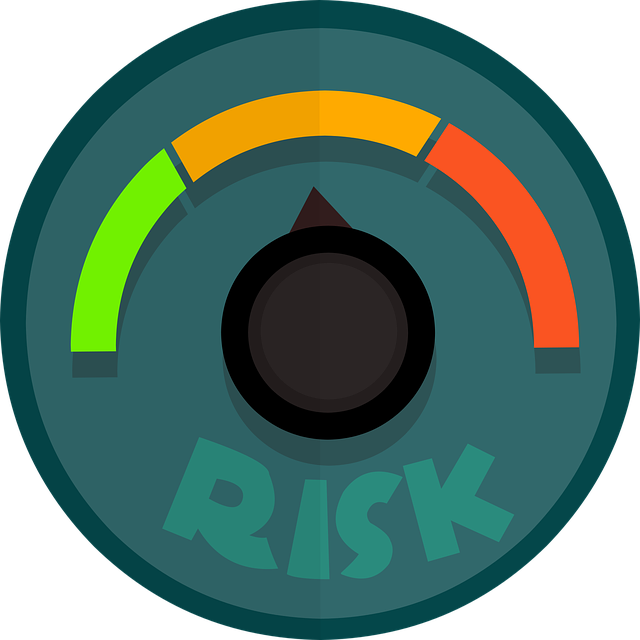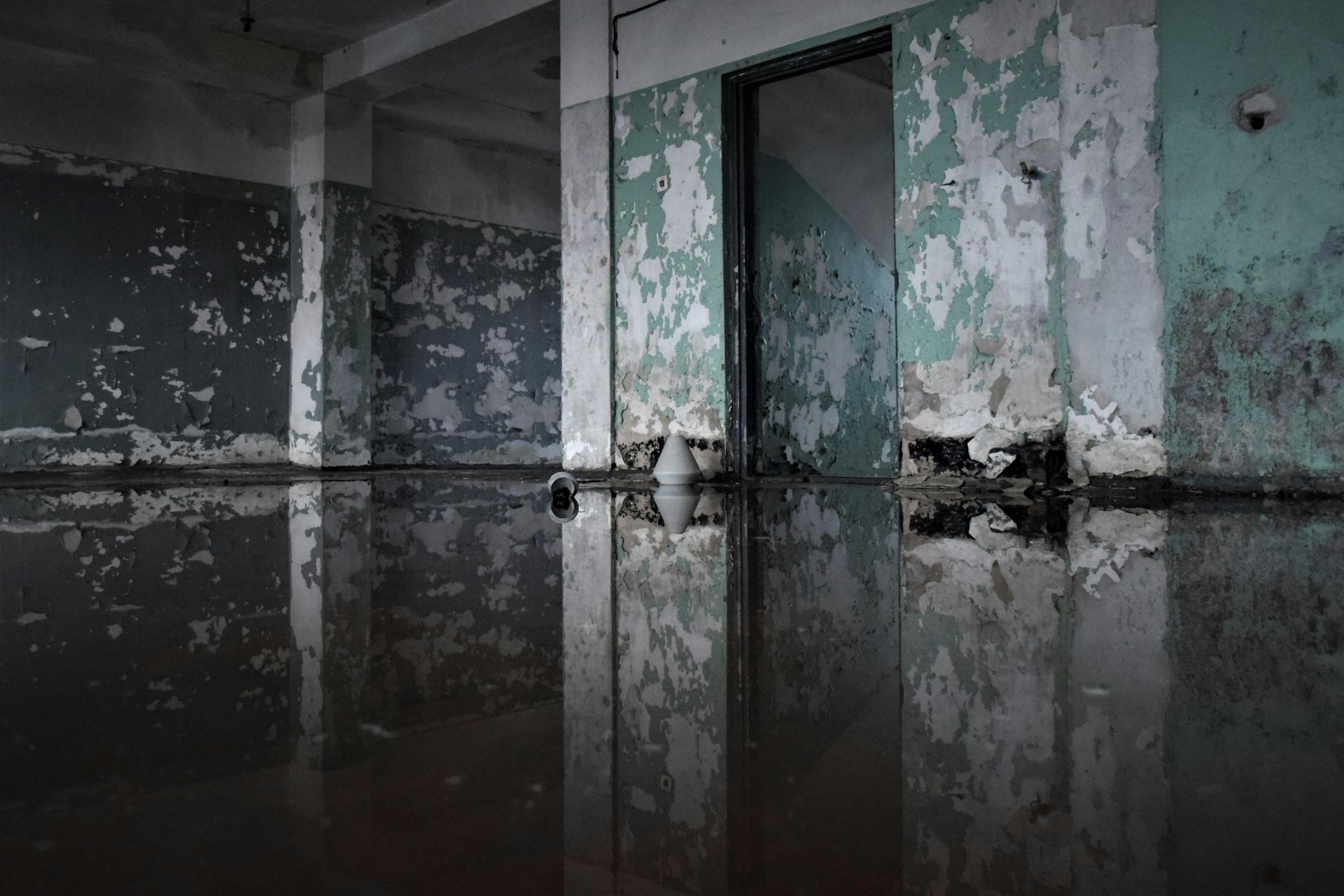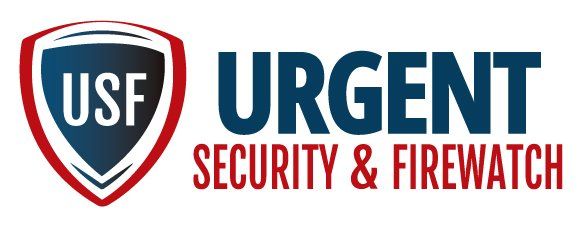Comprehensive Guide to Identifying and Managing Building Risk

Emergencies can strike at any time, and for property managers and maintenance teams, being caught unprepared can lead to significant financial losses, tenant dissatisfaction, and even safety liabilities. From malfunctioning systems to unforeseen natural disasters, the risks are numerous and varied.
In the Washington, D.C., Metro area, the unique challenges of managing high-rise apartments and garden-style complexes amplify the need for proactive risk identification. For example, aging infrastructure, densely populated buildings, and extreme weather events all pose unique threats to local properties. Failing to address these risks could result in widespread disruptions and long-term reputational damage.
This guide will help you identify and manage potential risks to your building—including fire, flooding, and theft—while providing actionable steps to safeguard your property and its occupants. By the end, you’ll have a clear roadmap for preventing common issues and enhancing overall safety.
Table of Contents
- Introduction: Why Identifying Risks is Essential
- Questions Property and Maintenance Managers Should Ask
- Emergency Preparedness Training for Staff
- Fire: The Most Common Emergency Threat
- Flooding: A Silent but Costly Risk
- Theft Prevention: Protecting Your Property and Tenants
- Should you hire experts to provide risk assessments
- Conclusion: Proactive Steps for Safer Buildings
Safety Questions Property Manager and Maintenance Managers Should Ask Before Reading This Article

- How effective are our current procedures for preventing package theft? While cameras and locks are often installed, are they genuinely addressing the root causes of theft or just providing a false sense of security?
- What would happen if our fire alarms malfunctioned and we needed fire watch? Do we have an action plan, and would our team know how to respond & which vendor to call?
- How well-equipped is our staff to respond to flooding in high-risk areas? Have we prepared them with clear protocols, or are we relying on outdated systems to manage water damage?
- What risks might we be overlooking in our building’s security setup? Are there blind spots or areas vulnerable to unauthorized access?
- How would our tenants rate the building’s safety if asked today? Are we meeting their expectations, or would they highlight areas for improvement?
These questions are designed to challenge assumptions and help you identify gaps in your preparedness. By keeping these in mind, you’ll be better equipped to implement the recommendations in this guide.

These questions are designed to challenge assumptions and help you identify gaps in your preparedness. By keeping these in mind, you’ll be better equipped to implement the recommendations in this guide.
Emergency Preparedness Training for Staff

Equipping your staff with the necessary skills to handle emergencies is crucial for ensuring the safety of your building and its occupants. In a high-stakes situation, the effectiveness of your team’s response can make the difference between a controlled incident and a disastrous outcome.
Comprehensive training programs not only improve your team’s confidence but also reduce the risks of costly damages and liability issues.
Emergency preparedness training help ensure your staff knows how to identify hazards, respond appropriately, and assist tenants in staying safe during emergencies.
Benefits of Training:
- Improved Safety: Trained staff are better equipped to respond calmly and effectively, reducing risks to tenants and property.
- Compliance with Regulations: Many jurisdictions require regular staff training in fire safety, evacuation procedures, and other emergency protocols.
- Enhanced Team Confidence: Proper training boosts morale and ensures team members feel ready to tackle unexpected challenges.
Suggested Training Subjects
- Fire Safety and Evacuation Procedures
- Active Shooter Response & Preparation
- Flood Response and Water Mitigation
- Active Shooter and Emergency Situations
- Access Control and Unauthorized Entry Prevention
- Surveillance System Maintenance and Monitoring
- Tenant Safety Communication Protocols
- Basic First Aid and CPR
- Slip, Trip, and Fall Prevention
- Electrical Safety and Hazard Identification
- OSHA Compliance and Workplace Safety Standards
- Fire Watch Regulations and Documentation
- Emergency Communication and Crisis Management
Benefits of Training:
- Improved Safety: Trained staff are better equipped to respond calmly and effectively, reducing risks to tenants and property.
- Compliance with Regulations: Many jurisdictions require regular staff training in fire safety, evacuation procedures, and other emergency protocols.
- Enhanced Team Confidence: Proper training boosts morale and ensures team members feel ready to tackle unexpected challenges.
Here is some links to safety training for your team. (Some of them are free)
- Active Shooter Response and Preparedness Course: This course provides insights into handling active shooter situations, emphasizing the importance of preparedness and quick response.
free at safetyculture.com (to use create a free account then training > browse course library and search for the course name.) - Emergency Planning: Learn how to develop and implement effective emergency plans tailored to your building's specific needs. free at safetyculture.com (to use create a free account then training > browse course library and search for the course name.)
- Evacuation Procedures: The US Department of Occupational Safety & Health Administration (OSHA) provides a free manual for planning for workplace evacuations. Free manual from OSHA
- Basic First Aid: Gain knowledge in administering basic first aid during emergencies, which can be crucial in minimizing injuries before professional help arrives. free at safetyculture.com (to use create a free account then training > browse course library and search for the course name.)
- Disaster preparedness training: Build confidence in disaster response and learn essential techniques to protect yourself and others.
Available at Coursera.com
Fire emergencies: The Most Common Emergency Threat for properties

Fire is one of the most destructive and frequently encountered risks for any building. In densely populated areas like Washington, D.C., fires can spread quickly, causing extensive damage, endangering lives, and resulting in costly repairs and lawsuits.
Common Risks:
- Malfunctioning fire alarms and sprinkler systems: Regular inspections are often delayed, leaving critical systems inoperative during emergencies.
- Overloaded electrical circuits: Tenants may inadvertently overload outlets, leading to short circuits and potential fires.
- Improper storage of flammable materials: Shared spaces such as basements or utility rooms are often used to store hazardous items without proper precautions.
Common Mistakes:
- Failing to conduct regular inspections: Neglecting routine checks of fire alarms, extinguishers, and sprinkler systems is a frequent oversight.
- Assuming tenants are fully educated on fire safety: Without clear communication, tenants may unknowingly engage in unsafe practices like using space heaters improperly.
- Overlooking fire door maintenance: Fire doors are crucial for containing fires, but they are often left propped open or fall into disrepair.
Real-World Example: A high-rise apartment in downtown D.C. experienced a devastating fire due to an overloaded electrical outlet. The sprinkler system failed to activate in several areas because routine inspections had been skipped for over a year. The result was extensive damage to three floors, costing the property manager millions in repairs and legal expenses.
Actionable Steps
- Schedule bi-annual system inspections: Ensure fire alarms, sprinklers, and extinguishers are operational and meet local safety regulations.
- Conduct tenant fire safety education sessions: Provide clear guidance on safe practices, such as proper use of electrical outlets and appliances.
- Maintain fire doors and evacuation routes: Regularly inspect fire doors to ensure they close properly and are not obstructed.
- Implement a communication plan for fire emergencies: Ensure tenants are aware of evacuation procedures and know whom to contact during an incident.
Pro Tip: Partner with your local fire department to conduct safety audits and provide feedback on your building’s emergency preparedness.
understanding the Fire Watch Regulations
What is fire watch?
A fire watch service involves assigning trained personnel to monitor a building and walk the floors watching for signs of smoke or fire. They are like human fire alarms. Fire watch is required whenever ANY part of your fire alarm or fire sprinklers are out of service.
Why Fire Watch is Critical
Fire watch is not just about meeting regulatory requirements; it plays a vital role in protecting lives and property. When systems like alarms or sprinklers fail, a trained fire watch team acts as the first line of defense, ensuring hazards are identified and addressed before they escalate.
Why Fire Watch Can Be Challenging
Finding a reliable fire watch company can be difficult due to high demand and stringent regulatory requirements. In Washington, D.C., the need for multiple personnel—especially in taller buildings—further complicates staffing. For instance, a 10-story building would require at least five fire watch officers, plus additional staff for breaks if the coverage is needed for extended periods.
Know who to call
Most property managers know exactly who to call when their fire alarm system needs repair. However, when it comes to fire watch, many may not be sure where to turn or fully understand what is required. This is completely understandable—fire watch needs are not something most people encounter regularly, and the specific requirements can vary greatly depending on the location. Be sure to contact
companies like ours who specializes in fire watch.
Every city, county and state have their own unique regulations
In some cases, property managers might assume that fire watch requirements are uniform across jurisdictions or rely on practices from previous properties they’ve managed. Unfortunately, this isn’t always the case. Each jurisdiction has its own unique regulations, and misunderstanding these differences can lead to compliance challenges during critical moments.
Washington DC fire watch regulations are a good Example:
Washington DC requires 1 person for every 2 floors, plus one for the fire control room. If your building has 10 or more floors an additional person must be added to provide breaks. They also require a fire watch plan and prohibit properties from using their own staff.
You can learn more about fire watch regulations
here.
Real-World Example: A fire sprinkler pipe froze and busted at a building in the Capital Hill area of Washington DC. The maintenance manager contacted a repair company to repair the system. They arrived and repaired the leak. However, the system had to be taken offline for 24 hours to allow the pipe sealant to cure. The maintenance manager split fire watch between the property's staff to do fire watch until the system was restored. The manager previously worked in Montgomery County and Fairfax County he knew those areas require one per building and his staff could do it. He assumed Washington DC had the same requirements.
He was wrong
At approximately 8PM that evening, there was a small kitchen fire. The tenant could not extinguish it so they dialed 911. The fire department and fire marshal arrived, extinguished the fire but discovered the fire watch in place violated multiple requirements.
- The building did not submit a fire watch plan to the fire marshal
- The building did not have a licensed agency doing the fire watch.
- The building only had one person patrolling the building when they regulations required 4fire watch personnel since they had 6 floors.
The building was sited and issues a sizeable fine. The fire marshal instructed them to get a licensed agency for fire watch or face additional fines. It was 10PM on a Friday. Due to the last minute nature of their request the fire watch company charged them $75 per person, per hour.
When the system was restored the next day, the fire marshal arrived to do an inspection before approving fire watch to end. The fire marshal discovered their system was showing trouble alerts. As a result the fire watch was extended. The property ended up paying for 5 fire watch personnel, 24 hours per day at $75 per person for per day for 5 days. Plus the fine.
By prioritizing fire watch readiness and understanding your jurisdiction’s regulations, you can significantly enhance your building's safety measures and provide peace of mind for tenants and stakeholders alike.
Given the complexity and variability of fire watch regulations, it is helpful to establish an as-needed service agreement with a professional fire watch company. Such agreements ensure you can promptly secure qualified personnel when needed, maintaining compliance and safeguarding your property.
Proactive Solutions
To avoid delays during emergencies, proactively engage with a reputable fire watch service provider. Establishing a service agreement ensures you have immediate access to trained professionals who can help you stay compliant and maintain safety standards.
Looking for a dependable fire watch company?
We can help!
Flooding: A Silent but Costly Risk

Flooding is often underestimated but can cause significant damage to buildings, leading to costly repairs and tenant displacement. In the Washington, D.C., Metro area, buildings are particularly vulnerable to heavy rains, aging infrastructure, and unpredictable weather patterns.
Real-World Example: A garden-style apartment complex in Northern Virginia experienced extensive basement flooding during a tropical storm. The primary issues were clogged gutters and a malfunctioning sump pump, both of which had not been inspected for over a year. The resulting water damage led to tenant complaints, expensive repairs, and a prolonged cleanup process.
Real-World Example: A garden-style apartment complex in Northern Virginia experienced extensive basement flooding during a period unusually heavy rain and wind. The primary issues were clogged gutters and a malfunctioning sump pump, both of which had not been inspected for over a year. The resulting water damage led to tenant complaints, expensive repairs, and a prolonged cleanup process.
Common Risks
• Heavy rains overwhelming drainage systems: Intense storms can quickly overload gutters and downspouts, leading to water pooling around the building’s foundation.
• Burst pipes due to aging infrastructure: Many older buildings in the region suffer from outdated plumbing systems prone to failure.
• Improper grading around buildings: Poor landscaping or grading can direct water toward, rather than away from, the property.
Common Mistakes
• Neglecting regular maintenance of drainage systems: Clogged gutters and downspouts are a common oversight that exacerbates flooding issues.
• Failing to test sump pumps and water detection systems: These critical systems are often forgotten until it is too late.
• Ignoring landscaping adjustments: Shrubs, trees, and other landscaping features can block drainage paths if not properly maintained.
Actionable Steps
- Install flood/water detection sensors: Place these in basements, utility rooms, and other high-risk areas to catch leaks early.
- Develop a plumbing shut-off plan: Ensure maintenance staff knows the location of all shut-off valves and how to use them in an emergency.
- Schedule routine maintenance for drainage systems and sump pumps: Regularly clean gutters and test equipment before storm seasons.
- Adjust landscaping for proper drainage: Work with a professional to ensure water flows away from the building, not toward it.
Pro Tip: Conduct a post-storm inspection to identify weak points in your drainage system and address them immediately to prevent future issues.
Theft Prevention: Protecting Your Property and Tenants

Theft isn’t just about financial loss—it’s about perception and trust. Even if crime rates in your area are decreasing, a single theft incident can feel like 100 if tenants begin discussing it. Stories grow, perceptions shift, and tenants start questioning their safety. For property managers, managing the perception of safety is as critical as addressing actual risks.
Real word example: A multi-family building in the Dupont Circle neighborhood of Washington, D.C faced significant tenant dissatisfaction after 3 package thefts occurred within a short period. Although the actual thefts were minor, word quickly spread among tenants, leading to fears of broader safety issues. The building had security cameras. However, they were only facing the exits, lobby and garage. They discovered 2 of the cameras were facing the wrong direction.
The property contracted with a video surveillance company and had to wait 2 weeks for the cameras to arrive and be installed. Due to the delay, the property hired a security guard to patrol the building until the cameras were installed. The thefts ended. The problem was solved but not being on top of the security of their building was costly.
The costs
- Paid for a security guard 24/7 for two weeks.
- Earned multiple negative reviews losing their 5 star google review status
- Damaged the property management company's relationship with the building owner
Common Risks
•
Break-ins and unauthorized access: Poorly secured entrances and windows provide easy targets for criminals.
•
Package theft: Unsecured mailrooms or front entrances lead to frequent tenant complaints.
•
Blind spots in camera coverage: Incomplete surveillance allows areas of the property to remain vulnerable.
Common Mistakes
- Assuming existing cameras provide adequate coverage: Many systems are outdated or poorly positioned.
- Delaying security audits: Regular audits are necessary to adapt to evolving threats.
- Failing to educate tenants: Tenants unaware of safety practices may inadvertently contribute to security risks.
Have a theft problem?
Our security guards can help!
How Theft Affects Your Building
- Lower Occupancy Rates: Tenants are less likely to renew leases in buildings they perceive as unsafe.
- Negative Online Reviews: Safety concerns often surface in online reviews, discouraging prospective tenants.
- Decreased Property Value: High crime rates can reduce the building’s overall appeal and market value.
Actionable Steps
- Conduct a security camera audit: Ideally, hire a professional to ensure critical areas like entrances, parking lots, and delivery zones are covered. If doing it yourself, check:
- Building entrances and exits.
- Parking lots and garages.
- Delivery areas and mailrooms.
- Common areas such as hallways and laundry rooms.
- Consult a security camera company before making adjustments: Moving cameras might seem straightforward, but professionals can identify structural challenges or risks you may not be aware of. Many companies offer free consultations as part of their services.
- Track security checks systematically: Assign a staff member to walk the building weekly to ensure all exits lock and unlock properly. If weekly isn’t feasible, aim for at least monthly inspections.
- Leverage technology for tenant reporting: Use electronic forms to allow tenants to report suspicious activity if your current systems don’t already support it. Create handouts or a webpage to educate tenants on safety protocols and reporting methods. Emphasize that these measures are not reactive but proactive efforts to empower tenants.
Pro Tip: Always frame tenant communications positively. Explain that these safety enhancements are about empowerment and prevention, not due to any current issues.
Should You Hire Professionals to Do A Risk Assessment?
Deciding whether to hire a professional for your risk assessment can feel overwhelming. While some tasks can be handled in-house, complex risks often need a trained eye. Professionals have the experience to spot issues you might overlook, and their insurance provides an extra layer of legal protection.
Hiring Multiple Vendors for a Comprehensive Assessment
Engaging professionals to perform a thorough risk assessment of your building is a wise step, but it’s important to recognize that you may need different vendors to cover specific areas of expertise. For instance, a structural engineer may handle building integrity checks, while a fire safety specialist focuses on alarms, sprinklers, and emergency exits. Some professionals' services may overlap, such as safety consultants who have experience with both building code compliance and emergency planning, but others may have highly specialized knowledge. Be prepared to collaborate with multiple experts to ensure every aspect of your risk assessment is thoroughly addressed.
Key Considerations When Hiring a Professional:
· Consider the Complexity
Many aspects of your risk assessment involves specialized knowledge—like structural inspections or environmental hazards—a professional’s expertise can make all the difference.
· Available Resources
Assess your own expertise, time, and available resources. If you lack the time or technical know-how, hiring a professional may be the best option.
· Professional Expertise
Look for professionals with relevant certifications in building safety, emergency preparedness, and risk management. Positive references and a proven track record demonstrate their capabilities.
· Reduced Liability
Professionals don’t just offer expertise—they reduce your risk. Their liability insurance covers their work, providing protection if something goes wrong. Be sure to hire professionals with proper insurance and ask to be added as an additional insured.
Selecting the right professionals, such as those with experience in risk management and building inspections, helps safeguard your property and reduce your risk.
By conducting a comprehensive risk assessment and addressing potential risks proactively, property managers can create a safer and more secure environment for their occupants. Emergency preparedness—like updating fire alarms or creating tailored evacuation plans—is vital for protecting your property and ensuring your occupants' safety. Taking proactive steps today ensures you're ready when it matters most.
Start by scheduling a building walk-through this week to identify and prioritize potential risks. Addressing these early can prevent minor issues from becoming major emergencies. As a property manager, your proactive actions can be the key to protecting your community and building lasting trust with your residents.
Stay tuned for more practical tips and strategies to enhance your emergency planning and keep your building prepared for any challenge.
By conducting a comprehensive risk assessment and proactively addressing potential threats, property managers can create a safer environment for everyone. Emergency preparedness, from updating fire alarms to creating tailored evacuation plans, is vital for protecting your property and its occupants. Begin by scheduling a walk-through to identify and prioritize potential risks—your proactive efforts today can make a world of difference tomorrow.
Stay tuned for more practical advice and strategies to enhance your emergency planning and preparedness.
Conclusion: Proactive Steps for Safer Buildings
Managing risk is not just about addressing current vulnerabilities—it’s about anticipating future challenges and staying ahead of them. By focusing on fire, flooding, theft, and regular reassessments, you can create a safer environment for tenants, preserve the value of your property, and enhance your reputation as a responsible property manager.
The First 4 Steps Every Property Manager Should Take Today
List of Services
-
Schedule InspectionsItem Link List Item 1
Arrange for fire alarm, sprinkler, and security system assessments to ensure they are functioning properly. Include a walkthrough checking for any vulnerabilities like blind spots in security camera coverage or worn-out fire doors.
-
Prevent Last-Minute Fire Watch ChaosContact us. Click here List Item 4
Every fire alarm system will fail at some point, and it will likely happen at the worst possible time—like 8 PM on a Friday or 3 AM on a Saturday. There is no way to predict when your property will be affected. Without an as-needed service agreement in place, you risk scrambling for help, paying inflated emergency rates, or facing fines for not having fire watch in place. Secure an as-needed service agreement now to ensure immediate access to trained professionals and avoid costly disruptions when an emergency strikes.
-
Review and update emergency plansItem Link List Item 2
If you already have an evacuation plan, update it to reflect recent building modifications and ensure it includes clear instructions for residents. Share the updated plan with tenants to make them aware of evacuation procedures. If you do not have a plan, consult with an emergency preparedness expert to create one tailored to your property.
Disclaimer: This article provides general guidance on emergency preparedness and is intended for informational purposes only. It may not address all unique aspects of your property or specific circumstances. We strongly recommend consulting with a qualified professional before implementing any emergency plan to ensure it meets your unique needs and complies with all relevant regulations. While we strive to offer accurate and helpful information, we make no guarantees regarding its completeness or applicability and expressly disclaim any liability for actions taken based on the information provided here.
Fire Watch & Security Guard Services Call 888-241-8183
SERVICE AREAS
Washington DC | Maryland
|
Virginia
privacy policy COPYRIGHT © 2024 · URGENT SECURITY & FIRE WATCH · (888) 241-8183 · POWERED BY RJ Maven

